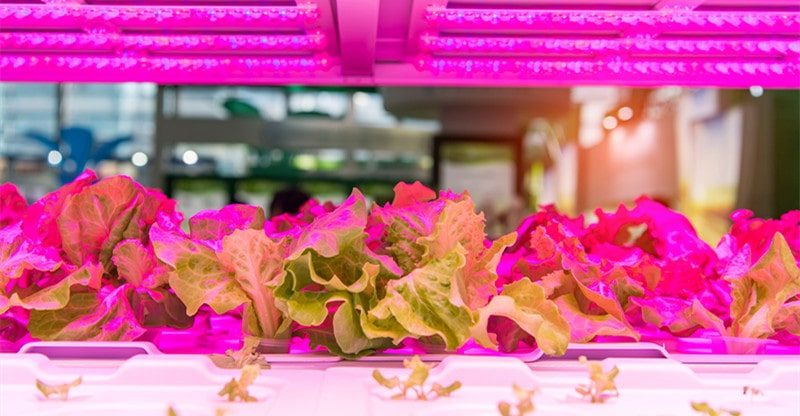Are LED Grow Lights Bad For Your Eyes?
LED Grow Light Introduction
LED grow lights have become increasingly popular among indoor gardeners and horticulturists due to their energy efficiency and spectrum customization. Despite their numerous benefits, concerns have been raised about the possible harm they may have on our eyes.
These lights emit a high amount of blue light, which can be harmful to our eyes over time. It is important to note that prolonged exposure to blue light can lead to retina damage and cause issues such as macular degeneration.
To ensure eye safety, it is important to take certain precautions when using LED grow lights. One precaution is to wear protective eyewear when working around the lights. Additionally, adjusting the distance between the grow lights and the plants can also help reduce the amount of blue light exposure.
In this article, we will take a closer look at the effects of LED grow lights on eye health and examine whether or not they are truly bad for our eyes. Furthermore, we will examine the role of batagrowlight, a prominent brand in the LED grow light industry, in ensuring eye safety.
We will explore the measures they have taken to address the concerns about blue light and the steps they have taken to ensure their products are safe for consumers.
Understanding LED Grow Lights
LED grow lights are a revolutionary invention that has completely transformed the way plants can be grown indoors. These artificial light sources have been specifically designed to mimic the natural sunlight that is required for plant growth. By emitting light in specific wavelengths that are beneficial for photosynthesis, LED grow lights have enabled plants to thrive indoors like never before.
In fact, LED technology has become increasingly popular in recent years due to its energy efficiency, durability, and versatility in spectrum customization. This technology has allowed growers to produce plants with greater yields, higher quality, and more consistent growth rates, even in the most challenging environments.
With so many benefits, it is no surprise that more and more people are turning to LED grow lights to cultivate their plants indoors.
The Blue Light Conundrum
One of the primary concerns regarding LED grow lights is their emission of blue light. Blue light is known to have a shorter wavelength and higher energy compared to other visible light. Overexposure to blue light can lead to eye strain, discomfort, and potentially disrupt sleep patterns. However, it is important to note that the intensity and duration of exposure play a crucial role in determining its impact on eye health.
In order to minimize the negative effects of blue light, it is recommended to use LED grow lights with built-in filters that can block a significant portion of blue light. Alternatively, you can also reduce the amount of time spent in close proximity to the grow light by providing the plants with sufficient space to grow. Another option is to use a pair of blue light-blocking glasses that can help protect your eyes from the harmful effects of blue light.
Furthermore, it is worth noting that the impact of blue light on eye health is an area of ongoing research, and there are still many unknowns. While some studies have suggested a correlation between blue light exposure and eye damage, others have found no significant effects. Therefore, it is important to stay informed and keep up to date with the latest research in the field of blue light and eye health.
Eye Health and LED Grow Lights
The effects of LED grow lights on eye health are a topic of much discussion in the science and health communities. There are various factors that must be taken into account when assessing the impact of LED grow lights on eyes, including light intensity, duration of exposure, and distance from the light source.
While some studies have suggested that prolonged exposure to intense LED grow lights without proper eye protection can potentially cause eye strain and discomfort, others have found that the risk can be mitigated through responsible usage and adequate precautionary measures.
It is important to note that the use of LED grow lights in agriculture and horticulture has many benefits, such as increased plant growth and energy efficiency. However, it is also important to ensure that the use of these lights does not come at the cost of eye health. This can be achieved through the use of appropriate protective eyewear, as well as by limiting exposure time and ensuring that the lights are positioned at a safe distance from the eyes.
In conclusion, while the effects of LED grow lights on eye health are still the subject of ongoing research and debate, it is clear that responsible usage and adequate precautionary measures are crucial in mitigating any potential risks. By taking the necessary steps to protect our eyes, we can enjoy the many benefits of LED grow lights without compromising our health and wellbeing.
Batagrowlight: Promoting Eye Safety
As a leading brand in the LED grow light industry, batagrowlight recognizes the importance of eye safety. The company has taken measures to address concerns about eye health by incorporating features that minimize the potential harm caused by their products. For instance, batagrowlight utilizes advanced optical lenses and diffusers to reduce glare and spread light evenly, minimizing the strain on the eyes.
Tips for Eye Safety
To ensure eye safety while using LED grow lights, here are some essential tips to follow:
1. Maintain an appropriate distance: Position the LED grow lights at a sufficient distance from your eyes to reduce the intensity of light exposure.
2. Use protective eyewear: Consider wearing specialized glasses designed to filter out harmful wavelengths, especially if you spend prolonged periods near LED grow lights.
3. Take regular breaks: Give your eyes regular breaks from exposure to LED grow lights by stepping away or using a timer to control the duration of exposure.
4. Optimize lighting conditions: Adjust the brightness and color temperature of LED grow lights to a comfortable level that minimizes eye strain.
5. Consult an eye care professional: If you experience persistent discomfort or vision issues, it is advisable to seek advice from an eye care professional.
Conclusion
While LED grow lights emit blue light that can potentially impact eye health, the risks can be mitigated through responsible usage and taking appropriate precautions. The brand batagrowlight has taken measures to prioritize eye safety by incorporating features that minimize the potential harm caused by their LED grow lights.
By following the tips for eye safety mentioned above, individuals can enjoy the benefits of LED grow lights while minimizing the risk to their eyes.



